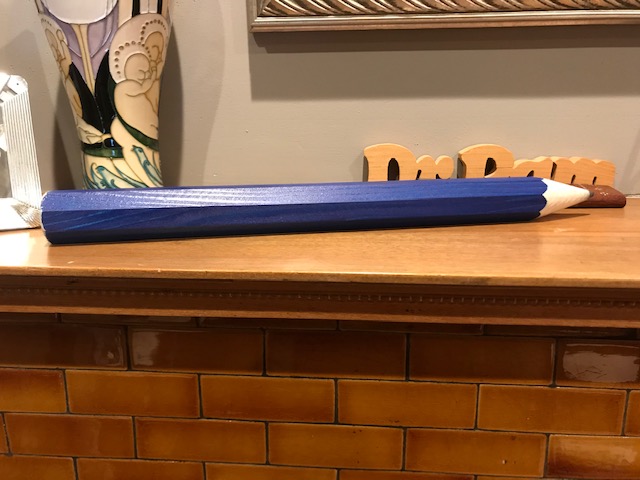A Brief History of the Pencil
One of the unexpected things I learned during our visit to Nuremberg over the holidays is that the city was the home to the first mass-produced graphite lead pencils, beginning in 1662.
Before we visited Nuremberg, I hadn’t given the history of pencils much thought.* In fact, the only piece of pencil history that I knew was that Thoreau invented a better pencil, and then got bored with the whole thing and went off to do something else. But I would have been hard pressed to tell you what made Thoreau’s pencil better. (We’ll get there in a moment.)
As those of you who have hung around here on the Margins for a while know, I can’t resist tracking down the story behind a bit of history trivia. Here’s some of what I found:
- The roman stylus is the immediate ancestor of the modern pencil: a thin metal rod that was used to make a light mark on papyrus. Some styluses were made of lead, which why we still call pencil cores leads even though they have been made of graphite ever since the stylus became a pencil.
- In fact, graphite is the reason styluses became pencils. In 1564, someone discovered a large graphite deposit in Borrowdale, England. Graphite makes a darker mark than lead, but it is too soft and brittle to use without something to hold it. At first, people wrapped graphite sticks in string, but eventually someone inserted a graphic stick into a hollow piece of wood. Poof! A pencil.
- The new industry/craft of pencil making was transformed in Nuremberg. As I’ve mentioned before, the Nuremberg council kept tight control over craft processes in the city. Pencil-making was seen as a two-step process, requiring craftsmen from two different trades to create a single pencil: a lead cutter to shape the graphite and a carpenter or knife handle maker to put the graphite in a wooden case. A storekeeper named Friedrich Staedtler, who was not a member of either skilled trade, figured out how to make a better pencil from start to finish. Pencil makers became a recognized craft category by the 1730s.
- I was astonished to learn that Thoreau didn’t just invent a better pencil; he revolutionized the American pencil industry. American graphite was less pure than British graphite and pencils made from it smudged. Thoreau worked for a time in his father’s pencil factory and was determined to create a better product. After hitting the books at the Harvard Library, he came up with a method of blending graphite and clay that solved the problem. The Thoreau pencil factory took off. Shortly thereafter, Thoreau also took off for Walden Pond. (FYI: He went back into the pencil business occasionally when he needed cash.)
That’s all I’ve got. If you’re interested in learning more about pencil history, everyone seems to agree that the book to read is The Pencil: A History of Design and Circumstance by Henry Petroski. I must admit, I’m tempted. **
*On the other hand, I’ve spent a lot of time reading about the history of paper, which was invented in China and then spread to Europe via the Islamic world—making it exactly the kind of thing I’m fascinated by.
**In fact, I’m tempted by several of Petroski’s books.






I had no idea there were pencils that didn’t have graphite in them or that graphite wasn’t the first thing used to make them. How interesting!